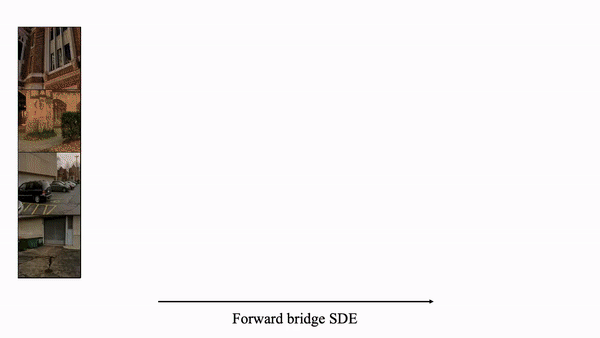Researchers at Stanford Propose DDBMs: A Simple and Scalable Extension to Diffusion Models Suitable for Distribution Translation Problems
Diffusion models have recently seen much success and attention in the Artificial Intelligence community. Belonging to the family of generative models, these models can effectively reverse a diffusion process that turns data into noise, allowing them to understand complex data distributions. This method has been a breakthrough in a number of generative tasks, particularly in the generation of high-quality images, where it has outperformed conventional GAN-based techniques. The development of modern text-to-image generative AI systems has been made possible by these diffusion model developments.
Diffusion models have performed exceptionally well in some areas but not in others. It can be difficult to apply them to applications like picture translation, where the goal is to map between pairs of images because they presuppose a preexisting distribution of random noise. Complex methods like training the model or manually adjusting the sample approach are frequently used to address this problem. These techniques have weak theoretical underpinnings and frequently support one-way mapping, usually from corrupted to clean pictures, dispensing with the idea of cycle consistency.
In contrast to the conventional diffusion model paradigm, a team of researchers has introduced a new and unique strategy known as Denoising Diffusion Bridge Models (DDBMs). Diffusion bridges are a class of processes that smoothly interpolate between two paired distributions that are specified as endpoints, and DDBMs make use of this idea. DDBMs derive the score of the diffusion bridge directly from data rather than starting with random noise. The learned score then directs the model as it solves a stochastic differential equation to map from one endpoint distribution to the other.
The capacity of DDBMs to automatically combine several kinds of generative models is one of their main advantages. They can easily combine components from OT-Flow-Matching and score-based diffusion models, allowing for the adaption of current design decisions and architectural strategies to address their more general challenge.
The team has applied DDBMs to difficult-picture datasets for their empirical analysis, taking into account both pixel-level and latent-space models. DDBMs greatly outperform baseline approaches in common picture translation tasks, demonstrating their suitability for tackling challenging image alteration tasks. DDBMs produce competitive results with state-of-the-art techniques specially created for image production, as assessed by FID scores when the team simplifies the problem by assuming that the source distribution is random noise.
This shows how adaptable and reliable DDBMs are in a variety of generative tasks, even when they are not specifically designed for the given circumstance. In conclusion, diffusion models have been effective in a variety of generative tasks, but they have drawbacks for work like picture translation. The suggested DDBMs offer an innovative and scalable solution that integrates diffusion-based generation and distribution translation methods, improving performance and versatility in tackling challenging image-related tasks.
Check out the Paper and Github. All Credit For This Research Goes To the Researchers on This Project. Also, don’t forget to join our 31k+ ML SubReddit, 40k+ Facebook Community, Discord Channel, and Email Newsletter, where we share the latest AI research news, cool AI projects, and more.
If you like our work, you will love our newsletter..
We are also on WhatsApp. Join our AI Channel on Whatsapp..
![]()
Tanya Malhotra is a final year undergrad from the University of Petroleum & Energy Studies, Dehradun, pursuing BTech in Computer Science Engineering with a specialization in Artificial Intelligence and Machine Learning.
She is a Data Science enthusiast with good analytical and critical thinking, along with an ardent interest in acquiring new skills, leading groups, and managing work in an organized manner.
Credit: Source link


Comments are closed.